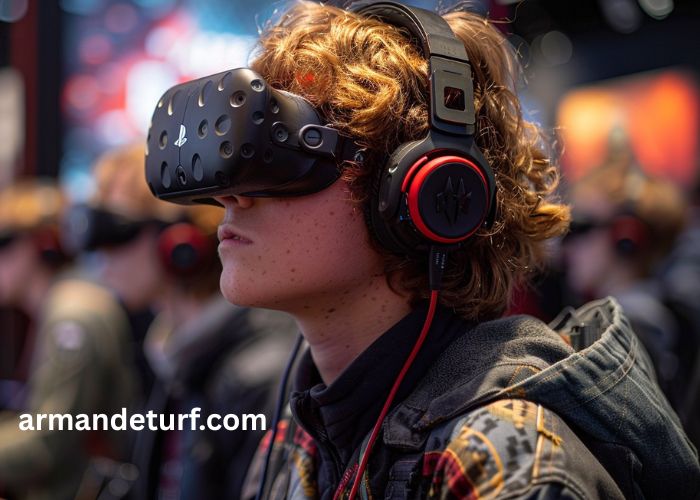Step-by-Step Tech Trends for 2025 Explained
As we move further into the digital age, technology continues to evolve at an astonishing pace. The year 2025 is poised to bring groundbreaking innovations that will shape the way we live, work, and interact with the world. In this comprehensive guide, we’ll walk you through the top tech trends for 2025, broken down step-by-step, so you can stay ahead of the curve and understand what’s coming next.
Why Understanding Tech Trends in 2025 Is Crucial
In today’s hyper-connected world, being informed about emerging technology is no longer optional—it’s essential. Whether you’re a business leader, a tech enthusiast, a student, or simply a curious mind, understanding these trends can help you make strategic decisions, prepare for change, and seize new opportunities.
H2: 1. Artificial Intelligence (AI) Becoming More Human-Centric
H3: Step 1: The Shift Toward Generative AI
In 2025, generative AI will reach new heights. AI tools like ChatGPT, DALL·E, and others will evolve from assisting in tasks to becoming true collaborative partners. From content creation to coding and design, AI will provide contextual assistance and deep personalization.
H3: Step 2: Explainable AI Gains Momentum
Users will demand transparency in AI decisions. Explainable AI (XAI) will become a key focus, enabling people to understand how and why AI systems make certain decisions. This will be especially vital in finance, healthcare, and legal tech.
H2: 2. Quantum Computing Crosses the Threshold
H3: Step 1: Quantum Supremacy in Real-World Scenarios
In 2025, quantum computing is expected to make significant strides. Companies like IBM, Google, and D-Wave are working to solve real-world problems faster than traditional supercomputers.
H3: Step 2: More Businesses Begin Quantum Integration
Although still niche, early adoption of quantum-as-a-service (QaaS) platforms will begin. Financial modeling, material simulation, and drug discovery will be early use cases.
H2: 3. The Rise of Spatial Computing
H3: Step 1: Beyond AR and VR – Welcome to XR
Extended Reality (XR)—which includes AR (Augmented Reality), VR (Virtual Reality), and MR (Mixed Reality)—will become more seamless and accessible. Devices like Apple Vision Pro and Meta Quest 4 will offer enhanced immersion for both consumers and enterprises.
H3: Step 2: Industrial Adoption Accelerates
From training simulations in aviation to virtual collaboration in architecture, spatial computing will revolutionize workflows. Expect to see XR deeply integrated into sectors like healthcare, education, and manufacturing.
H2: 4. Edge Computing Powers Real-Time Experiences
H3: Step 1: Shift from Cloud to Edge
While cloud computing isn’t going away, edge computing will take center stage. It brings computation closer to data sources, improving speed and reducing latency—crucial for real-time apps like autonomous vehicles and IoT devices.
H3: Step 2: Enhanced 5G and Edge Synergy
5G networks, paired with edge computing, will enable faster data transfer and improved device-to-device communication. This is key for innovations in smart cities, augmented reality, and connected wearables.
H2: 5. Personalized Digital Experiences Through AI & Data
H3: Step 1: Hyper-Personalization at Scale
Thanks to advancements in machine learning, companies will be able to deliver ultra-personalized experiences. From dynamic pricing to custom health insights, personalization will redefine digital interaction.
H3: Step 2: Zero-Party Data Takes the Lead
With rising privacy concerns, users will willingly share data (zero-party data) in exchange for more value-driven interactions. Brands will need to shift toward transparent data practices and earn trust.
H2: 6. The Green Tech Revolution
H3: Step 1: Sustainable Tech Becomes a Priority
Climate change is pushing tech companies to develop eco-friendly innovations. In 2025, we’ll see green cloud services, low-energy chips, and sustainable supply chains become standard.
H3: Step 2: Smart Energy and IoT Integration
The Internet of Things (IoT) will play a pivotal role in sustainability. Smart grids, connected appliances, and real-time energy monitoring will help reduce environmental footprints.
H2: 7. Cybersecurity Reinvented with AI & Blockchain
H3: Step 1: AI-Powered Threat Detection
As cyber threats become more sophisticated, AI-based security systems will become more prevalent. These systems can analyze patterns, detect anomalies, and respond in real-time to threats.
H3: Step 2: Decentralized Identity Systems
Blockchain will be utilized for digital identity management, enabling users to own and control their personal data. Decentralized IDs (DIDs) will reduce identity theft and data misuse.
H2: 8. The New Frontier of Robotics
H3: Step 1: Cobots Enter Mainstream Industries
Collaborative robots (cobots) will become commonplace in sectors like manufacturing, healthcare, and logistics. Designed to work alongside humans, they boost productivity and safety.
H3: Step 2: Autonomous Delivery & Service Robots
From autonomous delivery drones to service robots in retail, robotics will redefine convenience. Expect more AI-powered machines in warehouses, public spaces, and even homes.
H2: 9. Biotechnology and Digital Health
H3: Step 1: AI in Diagnostics & Precision Medicine
Healthcare will benefit massively from AI tools that assist in diagnosis, predictive analysis, and treatment planning. Precision medicine—customized healthcare based on individual genetics—will rise.
H3: Step 2: Wearables Become Health Guardians
Advanced wearables and health tech will allow real-time monitoring of glucose, heart health, mental well-being, and more. They’ll evolve into full-fledged personal health assistants.
H2: 10. The Evolution of the Internet: Web 3.0
H3: Step 1: Decentralized Platforms Gain Ground
Web 3.0 represents the shift toward decentralization. Platforms built on blockchain will allow users to own their data, assets, and interactions, reducing the reliance on tech giants.
H3: Step 2: NFTs and Digital Ownership
NFTs (Non-Fungible Tokens) will go beyond art. In 2025, they’ll represent identity, academic credentials, virtual property, and licenses, becoming key to digital authenticity.
H2: 11. Ethical Tech and Regulation Take Center Stage
H3: Step 1: Governments Draft Ethical Guidelines
With AI, robotics, and surveillance tech evolving rapidly, ethical frameworks and regulations will be implemented globally. The EU AI Act and similar regulations will influence worldwide standards.
H3: Step 2: Rise of Tech Responsibility Culture
Tech companies will invest in responsible innovation, considering long-term impacts on society. This includes ethical AI, inclusive design, and equitable access to digital services.
H2: 12. Digital Workspaces Redefined
H3: Step 1: Hybrid Work Matures with Smart Tools
The hybrid work model will evolve into a fully integrated digital ecosystem. AI-powered collaboration platforms, smart meeting assistants, and virtual offices will become the norm.
H3: Step 2: Skills Over Degrees
In the new tech-driven workplace, skills and micro-credentials will become more valued than traditional degrees. Platforms like Coursera, Udemy, and LinkedIn Learning will play a central role in workforce upskilling.
H2: 13. Metaverse Gets More Practical
H3: Step 1: Enterprise Metaverse Use Cases Expand
While the consumer metaverse is still growing, business use cases—like virtual training, remote inspections, and digital twin simulations—will gain traction in 2025.
H3: Step 2: Interoperability Improves
One of the key challenges of the metaverse—platform interoperability—will start to be addressed. Standards will be developed to ensure smoother transitions between digital environments.
H2: 14. Voice and Natural Language Tech Evolution
H3: Step 1: Conversational AI Becomes the Norm
From smart homes to customer service, voice-first interfaces and chatbots will become more natural, empathetic, and context-aware—thanks to LLMs (Large Language Models).
H3: Step 2: Multilingual & Emotion Recognition
Future AI assistants will understand multiple languages, tones, and emotions, leading to a more human-like interaction experience across sectors like healthcare, retail, and education.
H2: 15. Autonomous Everything: Cars, Drones, and Beyond
H3: Step 1: Self-Driving Tech Reaches Level 4 Autonomy
2025 will be a milestone year for autonomous vehicles, with several manufacturers achieving Level 4 autonomy—where cars can operate without human intervention in most conditions.
H3: Step 2: Drones and Autonomous Systems Expand
Drones will find roles in agriculture, construction, delivery, and surveillance. Their ability to collect and transmit real-time data makes them indispensable in remote and rapid-response applications.
Final Thoughts
The tech trends of 2025 are not just futuristic ideas—they’re real, tangible shifts that are already unfolding. From AI and robotics to green tech and decentralized systems, each trend represents an opportunity to innovate, transform industries, and improve everyday lives.
To stay relevant in this rapidly changing landscape, businesses and individuals must embrace a mindset of continuous learning, adaptability, and digital curiosity.
FAQs About Tech Trends for 2025
What is the most disruptive tech trend in 2025?
Generative AI and quantum computing are considered highly disruptive due to their potential to transform industries from the ground up.
How can businesses prepare for 2025 tech changes?
Invest in digital transformation, upskill your workforce, prioritize cybersecurity, and stay updated with emerging technologies.
Will AI replace jobs in 2025?
AI will augment many jobs rather than replace them entirely. Roles that require empathy, creativity, and complex problem-solving will continue to rely on human input.
Are these trends applicable to small businesses?
Yes! Many of these technologies are becoming more accessible and affordable, making them viable even for startups and SMEs.



